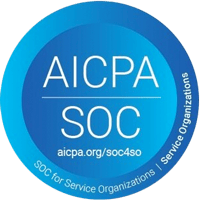Hiring and retaining qualified nurses aides is an ongoing challenge for skilled nursing facilities. Although there are over 1.5M certified nurses aids in the United States, and over half are employed in long term care, demand continues to exceed supply.
It’s an entirely different scenario in retail and service industries. Millions of jobs have been eradicated by the coronavirus pandemic and are unlikely to come back due to fundamental shifts in the way we live and work. Business leaders are planning for a future that embraces onsite robotics, offsite teams, and minimal business travel. This means that many workers will not return to the same job they did before the pandemic – even after the vaccine is readily available.
Reskilling Workers for Healthcare
We are in the wake of a massive reskilling of unemployed Americans, and according to the Pew Research Center, 66% of jobless adults have seriously considered changing occupations. This is a tremendous opportunity for skilled nursing facilities to convert and train new talent, specifically through in-house nurses aide training programs. Programs that cover the cost of training in exchange for a minimum service commitment will be particularly attractive during these difficult economic times and may be a win-win for both employers and employees. In addition, many states have adapted requirements to allow for hybrid training models which can improve accessibility while also aid to reduce overhead costs of launching an in-house program.
Certified Nurses Aide Training Requirements
Certified nurses aide training requires a minimum of 75 hours of combined didactic, skills lab, and practical clinical training, regulated by each state. Requirements vary from state to state on the breakdown of hours, curriculum and instructor requirements. Relias, a healthcare consulting firm, offers a complimentary webinar on how to build an in-house nurse aide certification program and can help facilities develop their own. As a starting point, we highly recommend visiting your state website (i.e. New York State Requirements) to review program development requirements and begin planning from there.
How To Get Started
Once you’ve developed your CNA training program and allotted the resources needed to run it, it’s time to find talent that is interested in becoming a CNA. Create a CNA in Training job description, and then use a platform like Apploi to instantly publish your position across multiple job boards. You can create screening stages to ensure only serious candidates with appropriate transferable skills apply. Work with your legal or human resources team to develop a contract that requires successful graduates of your program to commit to a minimum service requirement. Determine how many CNAs you can train, what the onboarding process looks like after they receive their certification, and what leadership development opportunities you can offer along the way.
With a training program and a career path in place, your skilled nursing facility can become an attractive place for those interested in an entry role in healthcare.
Contact us today to learn more about our end-to-end solution for recruiting, onboarding, and credentialing.





